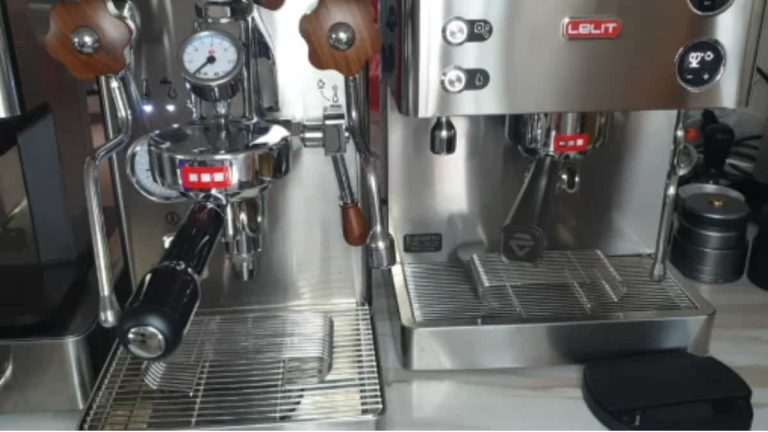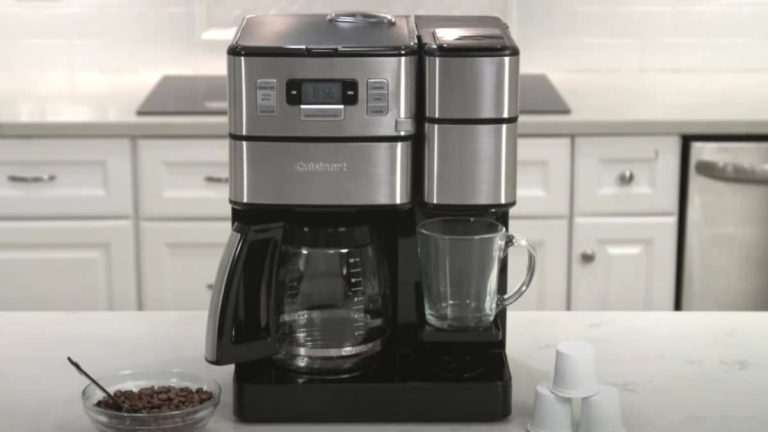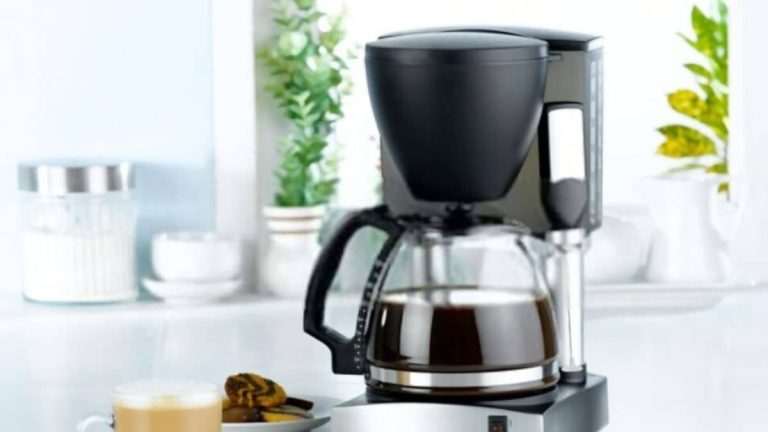Ridged vs. Ridgeless Basket Espresso Basket
In the world of espresso, it has long been assumed that there is no difference in performance between ridged and ridgeless baskets. So we’re going to compare a ridged basket vs. a ridgeless basket.
A ridged basket is easily distinguished by an indentation that goes around the whole circumference of the filter basket towards the top, whereas a ridgeless basket lacks this feature. The ridge maintains the basket firmly seated inside the portafilter when knocking out extracted pucks. A metal spring holds the filter basket in place.
What’s the difference between ridged and ridgeless baskets?
Table of Contents
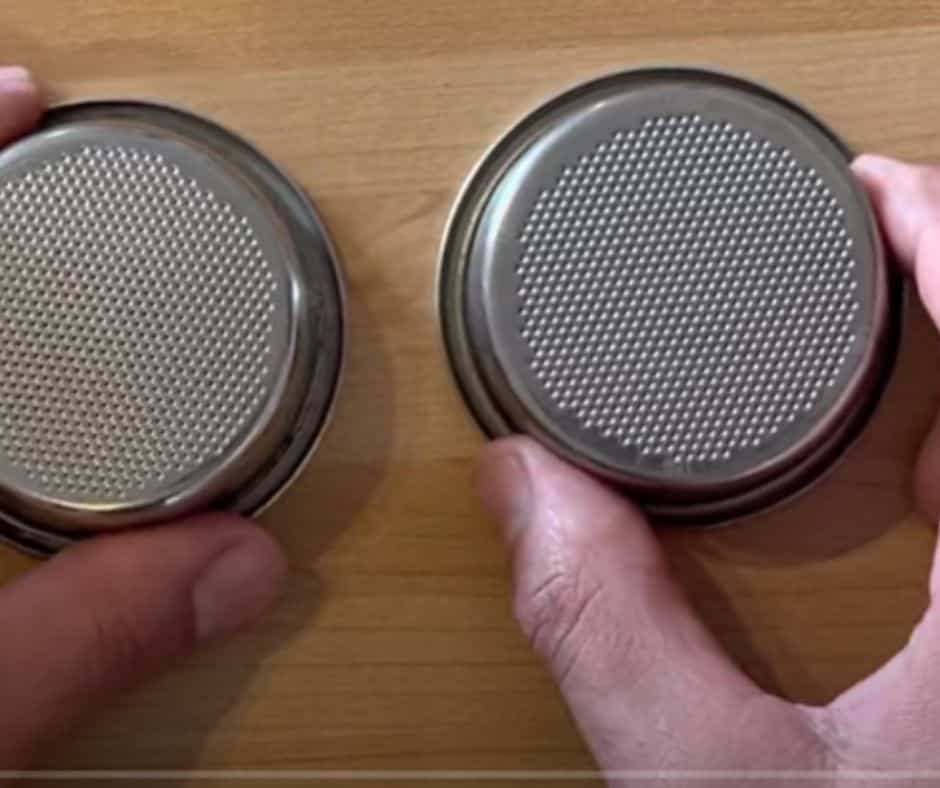
A ridgeless basket is always at risk of accidentally being knocked out of the portafilter. However, this rarely happens in practice if you knock the portafilter dead center on the knock box/tube bar and come to a complete stop.
Despite this disadvantage, ridgeless baskets can knock pucks out far cleaner than ridged baskets. Even after knocking off pucks, ridged baskets gather old coffee grinds in the ridge area.
Ridged filter baskets include a slot in the side wall that a portafilter spring latches into to help keep the basket in place. Ridgeless or unridged, baskets have smooth walls and, as a result, require a stronger spring to keep them in place while removing spent coffee pucks.
The quality of your espresso is unaffected by whether you use ridged or ridgeless filter baskets. They both serve the same objective and have their advantages and disadvantages.
Filter baskets: single, double, and triple
This naming practice alludes to the number of espresso shots you can create, usually one or two.
In other words, the bigger the basket, the more espresso you can make.
A single basket can hold anywhere from 7 to 12 grams of ground coffee and is used to prepare one espresso. The funnel-shaped basket is typically coupled with a single-spouted portafilter.
The funnel shape of single filter baskets distinguishes them.
A double basket is usually between 14 and 21 grams in weight. The walls of a double basket are usually straight or slightly tapered inward.
Filter baskets with twin walls that are pressurized
A basket with a fake bottom is referred to as a dual wall. The wall you see above is not the same as the one below.
Dual-wall filter baskets are only found in home espresso machines and enable users who use pre-ground coffee to make false crema (which isn’t the best quality!). This is accomplished by pressurizing the coffee that has already been extracted through a secondary fake wall with a pinhole on the bottom.
Dual-wall filter baskets are easily identifiable and should be discarded! If you get a decent burr grinder and grind your coffee fresh regularly, you’ll thank me later (single-walled) baskets.
Filter baskets with high precision
All precision filter baskets have in common are evenly sized filtration holes.
Regular filter baskets made with standard production procedures are prone to having varying diameters and, worse, partially or completely clogged filter holes. These flaws in the production process might affect extraction, resulting in inconsistent and under-extracted espresso.
Some precision filter baskets, such as the IMS E&B Lab filter baskets we use at The Espresso School, are larger than 58 mm in diameter. A variety makes a precision filter basket of companies, including IMS, VST, Pullman, etc.
Filter basket with a straight wall vs. one with a tapered wall
The term “triple basket” refers to a basket that can hold more than 21 grams of coffee. Aside from that, there isn’t much of a difference between a double and a triple basket because they’re both used to produce double espressos.
Because triple filter baskets are deeper than double filter baskets, they may not fit in your standard portafilter. You’ll need a deeper portafilter or a naked portafilter to accommodate triple baskets.
Diameters of filter baskets
Now that you’ve figured out that baskets come in ridged and ridgeless varieties and various capacities, you’ll notice that filter baskets come in various diameters.
The most typical basket diameter in commercial and higher-end domestic/prosumer espresso machines is 58 mm. However, baskets with a diameter of 53 mm are extremely unusual, as are baskets with a diameter of 57 mm.
The most common size utilized by most brands is 58mm.
57mm – an extremely uncommon size employed by domestic machine manufacturers such as Lelit and Ascaso.
53mm – less common but used by La Spaziale, Dalla Corte, a few lever-piston machines, and certain domestic machines.
So do I need a ridged or a ridgeless basket?
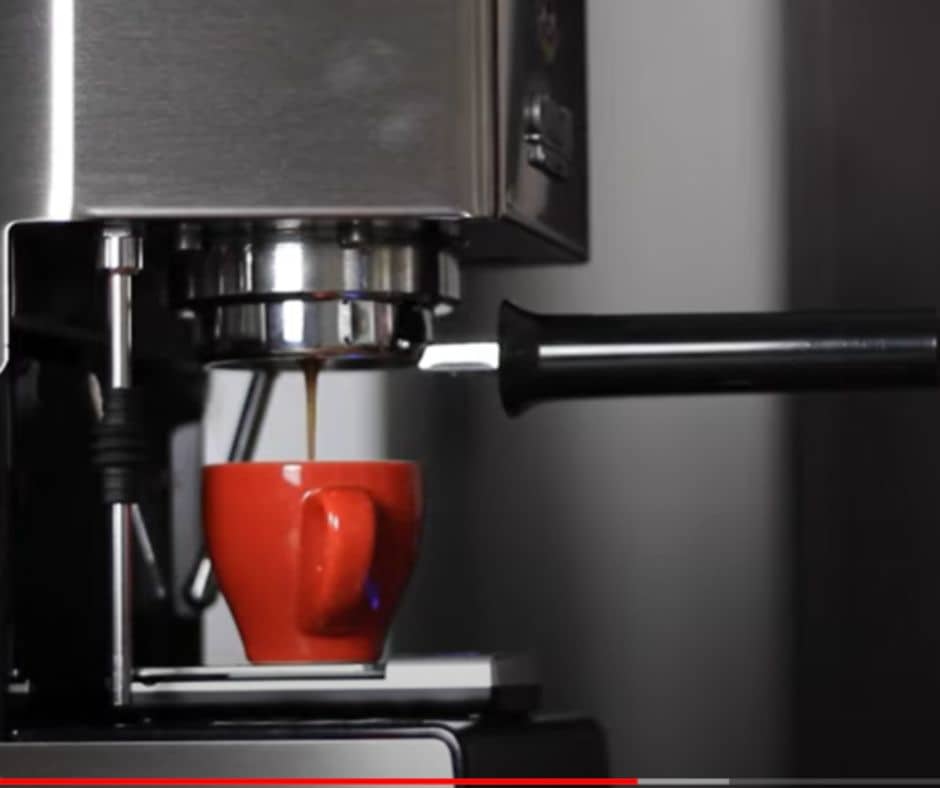
The quick answer is:
Purchase a ridgeless double basket if you only use a double basket (and a replacement spring if your existing baskets are ridged)
Purchase a ridgeless double basket and a spring and a single basket if you use a double basket most of the time and a single basket sometimes. When using the single basket, you must replace the springs in the portafilter, which takes about 10 seconds and involves a fingernail or the point of a knife.
Purchase a ridged double and single basket if you frequently use both a double and a single basket. Then, you’ll be able to swap baskets whenever you want without adjusting the spring.
The explanation and reasons for the short answer are as follows:
Double baskets produce more consistent results than single baskets. Most coffee experts advocate using a double basket whether you’re making one or two cups of coffee – just stop the machine a little earlier if you’re only making one cup.
A ridgeless basket is recommended if you plan to utilize a double basket because the walls are smooth and have no irregularities that could cause channeling. The pucks also fly out cleaner, requiring less clean-up after each shot.
Because single baskets are only available in ridged versions, if you plan to buy both a double and a single basket and use the single basket frequently, we recommend the ridged double basket to ensure that the single basket may be used without having to change springs every time.
The only exception is if you only use single baskets occasionally. The advantage of the ridgeless basket may outweigh the minor inconvenience of replacing springs while using the single basket.
If your machine has a ridged basket, the current spring is unlikely to retain a ridgeless basket securely. However, a replacement spring can be purchased as an alternative.
How to determine the size capacity of your filter basket?
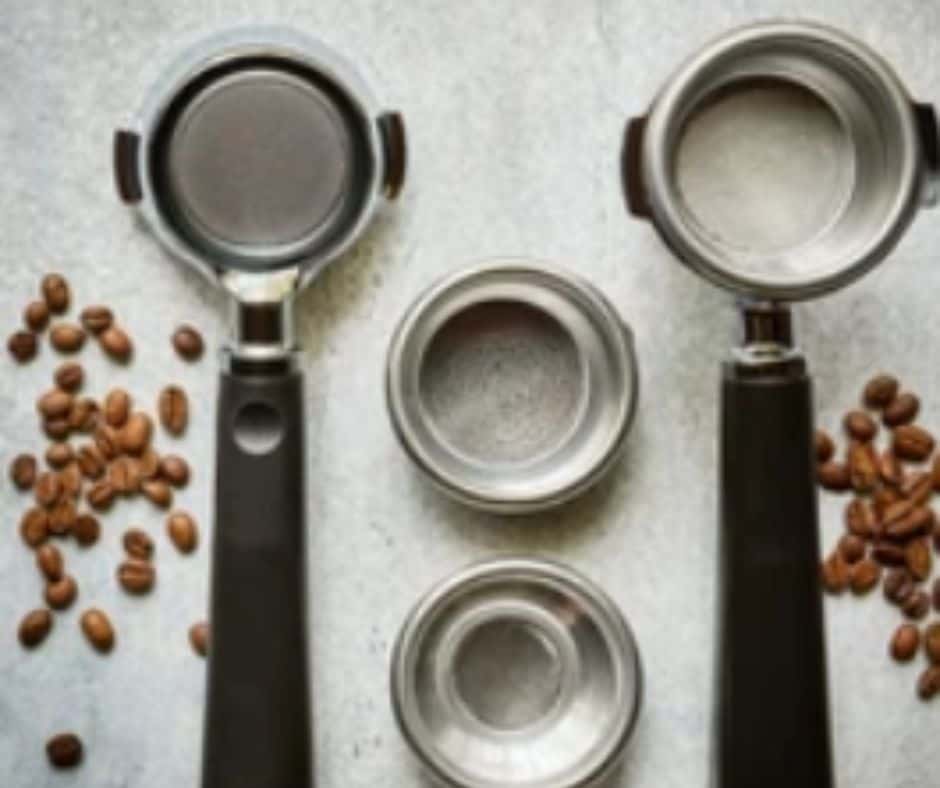
Baskets frequently arrive with no information on them, so you’ll have to get the best dose for the basket you’re working with.
Here’s how to figure out how much coffee your basket can hold in three easy steps:
Evenly distribute the grinds by sweeping them across the entire basket surface with your index finger ((without squeezing into the basket) to fill in any gaps in the coffee supply. Any surplus can be scraped away using a scraper.
To get a superior result, repeat the technique a few times. This should tell you if you’re dealing with an 18-gram basket or a 22-gram basket.
Take out a pair of vernier calipers and measure the inside diameter of the tamper you want to buy.
You can safely increase or reduce your dose by 1 gram for the basket you just sized.
For example, the scale shows 17.4 grams, 18.2 grams, and 19.0 grams after three exercise repetitions. Therefore, it’s safe to assume you’re dealing with an 18-gram basket. As a result, you should be able to dose between 17 and 19 grams without issue in the basket.
When to use ridged or ridgeless filter baskets?
For a variety of reasons, we choose ridgeless baskets:
The basket diameter above and below the ridge is not usually the same. The tamper will bottom out on the ridge if the basket is smaller below the ridge, making it unable to apply much tamp pressure to the coffee below the ridge, resulting in an underdamped puck.
Suppose the basket is larger below the ridge (as with baskets with an inwardly formed ridge); the water will soon find an exit via a ring of fully untouched coffee around the basket’s edge. Because the ridge-pressing procedure slightly deforms the basket, there is a better probability that the basket will be more consistently round if there is no ridge.
A fitting tamper can be more difficult to obtain depending on the level of distortion (and we’ve seen some pretty ovoid baskets in our day! ), which can lead to less-than-ideal extractions.
A ridge can provide a weak area in the puck that allows peripheral channeling to begin. This is less likely to be a concern if you tamp below the ridge, but in some cases, the completed surface of the puck will be above the ridge.
Conclusion
The bottom line is that any change in basket diameter across the bulk of the basket’s height will result in uneven tamping, significantly impacting how the espresso is extracted uniformly. Again, this condition is more likely to occur when there is a ridge.
If you’re still undecided, buy replacements in the same style as the ones you have now, or contact us to discuss your issue more, and we’ll be pleased to offer a combination that meets your needs.



